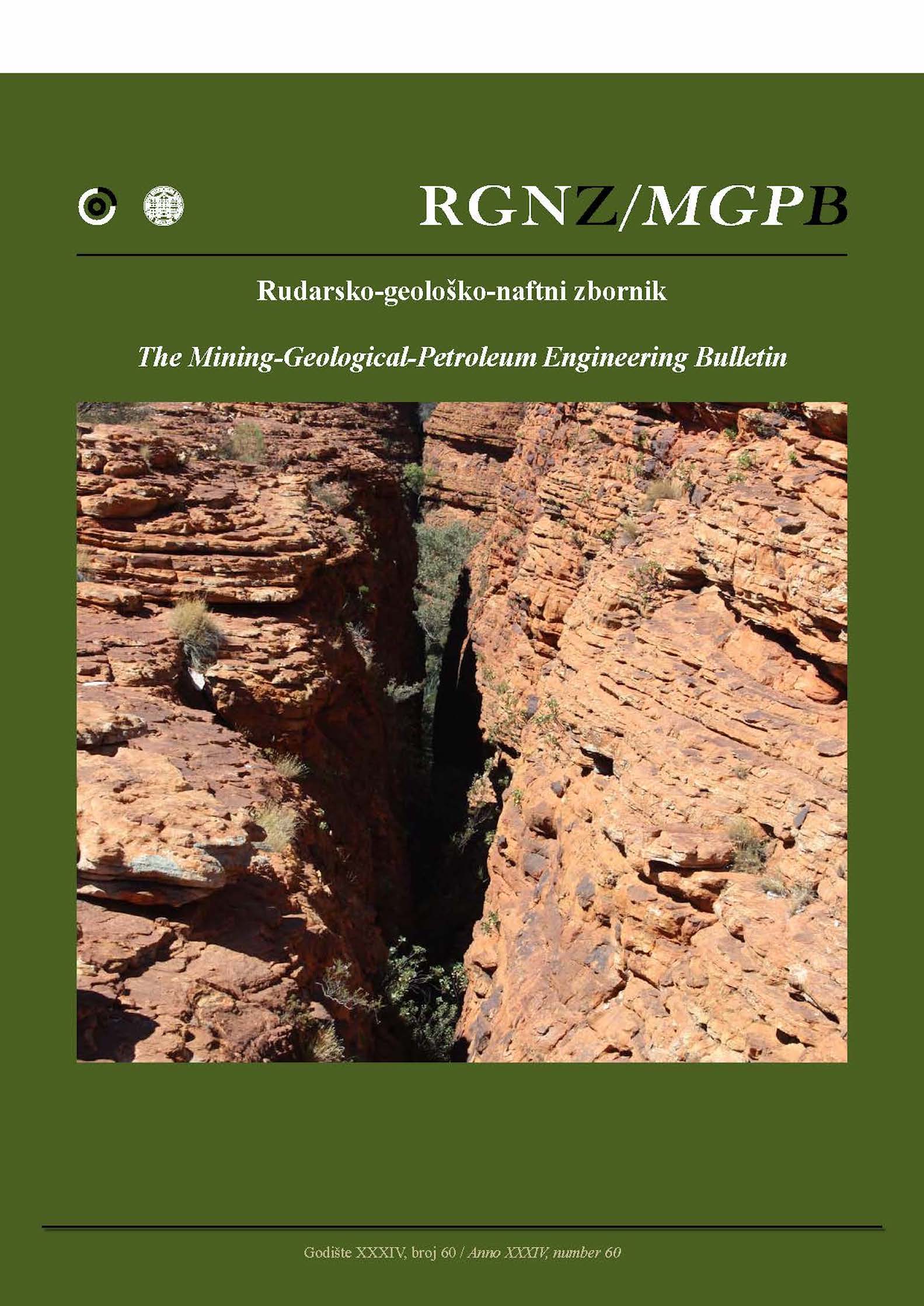Application of the Kaiser Effect in In-situ Stress Measurement in Rocks - an overview
DOI:
https://doi.org/10.17794/rgn.2022.4.1Keywords:
In-situ stress, Acoustic emission, Kaiser Effect, Signal processing, Wavelet transformAbstract
Knowledge of in-situ rock stress is one of the significant issues in many engineering problems. There are various methods for determining in-situ stress. Most of the common methods used for determining of in situ stress are time and cost consuming and in many cases need specific accessibility. Therefore, attention to core-based methods is increasing. One of these methods is the acoustic emission technique based on the Kaiser Effect. The method is among the stress stressing-destressing methods and is based on observing the rock behaviour without having any important impact on it. Knowledge of the acoustic emission principles and acoustic signal parameters is the first step to use the Kaiser Effect method for the in-situ stress determination. Also using the Kaiser Effect method requites knowledge on the mechanism and theory associated with the Kaiser Effect. In this research, different methods for determining the Kaiser Effect in parametric (tangent method and maximum slope, etc.) and signal processing (Fourier transform, wavelet transform, etc.) terms were reviewed. Also results obtained from the Kaiser Effect method and was compared to other common methods used for in situ stress measurement, like over-coring and hydraulic fracturing methods and based on the results there was a good agreement between them. Also the effective parameters on determining the Kaiser Effect stress point were investigated. The important parameters were the testing procedure, confining pressure, physical properties of rock, delay time and retention time, direction and amount of loading, anisotropy angle and loading rate.
Downloads
Published
How to Cite
Issue
Section
License
Copyright (c) 2022 authors and journal

This work is licensed under a Creative Commons Attribution 4.0 International License.
Creative Commons-BY
Authors who publish with this journal agree to the following terms:
In agreeing this form, you certify that:
- You read the ethical codex of the RGN zbornik available at journal web.
- You submitted work is your original work, and has not previously been published and does not include any form of plagiarism.
- You own copyright in the submitted work, and are therefore permitted to assign the licence to publish to RGN zbornik.
- Your submitted work contains no violation of any existing copyright or other third party right or any material of an obscene, libellous or otherwise unlawful nature.
- You have obtained permission for and acknowledged the source of any illustrations, diagrams or other material included in the work of which you are not the copyright owner.
- You have taken due care to ensure the accuracy of the work, and that, to the best of your knowledge, there are no false statements made within it.
- All co-authors of this submitted work are aware of, and in agreement with, the terms of this licence and that the submitted manuscript has been approved by these authors.
Publication licence
You retain copyright in your submitted work, according to journal license policy (CC-BY). By signing this form you agree that RGN zbornik may publish it under the publication licence. In summary the licence allows the following:
Anyone is free:
- To copy, distribute, display, and perform the work.
- To make derivative works.
Under the following conditions:
- The original author must always be given credit.
- The work may not be used for commercial purposes.
- If the work is altered, transformed, or built upon, the resulting work may only be distributed under a licence identical to this one.
Exceptions to the licence
In addition to publishing the work printed under the above licence, RGN zbornik will also enable the work to be visible online.
The journal editorial can change the licence rules anytime but it cannot retroactively restrict author(s) rights.


